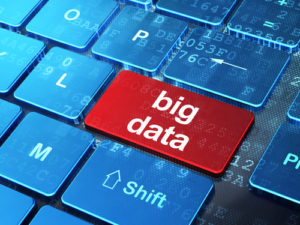Colleges and universities need to understand why it is important to differentiate between Big Data and analytics.
 Big Data, a complex collection of data sets used to analyze information, can be characterized by the degree of complexity within the data set and how much value can be derived from innovative vs. non-innovative analysis techniques.
Big Data, a complex collection of data sets used to analyze information, can be characterized by the degree of complexity within the data set and how much value can be derived from innovative vs. non-innovative analysis techniques.
But just how does Big Data differ from analytics, a multi-faceted discipline of discovery and communication of relevant data patterns?
Andrew McAfee, a principal research scientist at MIT’s Center for Digital Business and Erik Brynjolfsson, director of the MIT Center for Digital Business, attempted to answer this question by arguing that big data differs from analytics in three key ways:
1) Volume – Recent research by the analyst firm International Data Corp. (IDC) indicates that the global amount of digital data will grow from 130 exabytes to 40,000 exabytes by 2020.
For example, Walmart collects more than 2.5 petabytes of data every hour from customer transactions alone. A petabyte is one quadrillion byte or about the equivalent of 20 million cabinets of text. Consider that 90 percent of the data today was created only in the last two years.
2) Velocity – The speed of data is even more important that the volume. Real-time or near real-time information access enables organizations to be quicker in making decisions and executing moves than their competitors.
For example, a group of researchers from the MIT Media Lab used location data from mobile phones to determine how many people were in the Macy’s parking lot on Black Friday – the start of Christmas shopping in the United States. This enabled them to estimate the retail company’s sales on that day even before Macy’s was able to record its sales.
3) Variety – Big data comes in many forms. It can come in the form of images posted on Facebook, email, text messages, GPS signals from mobile phones, tweets and other social media updates.
These forms of data are collectively known as unstructured data. Each person today is potentially a walking data generator. That’s, however, data that is not organized in a database. The structured databases that stores most corporate information are not well suited for storing and processing big data.
At the same time, elements of computing such as storage, memory, processing and bandwidth are becoming cheaper, making it more economical for companies to conduct expensive data-intensive approaches to analyzing information. Big data may be unstructured and unwieldy, but there’s an enormous amount of vital signals among the “noise” that accompanies it. The value is just waiting to be mined.
- Higher Ed Tech Innovation News - April 25, 2024
- How is Technology Used in Higher Education? - April 25, 2024
- What is the Use of Digital Technology in Higher Education? - April 25, 2024

